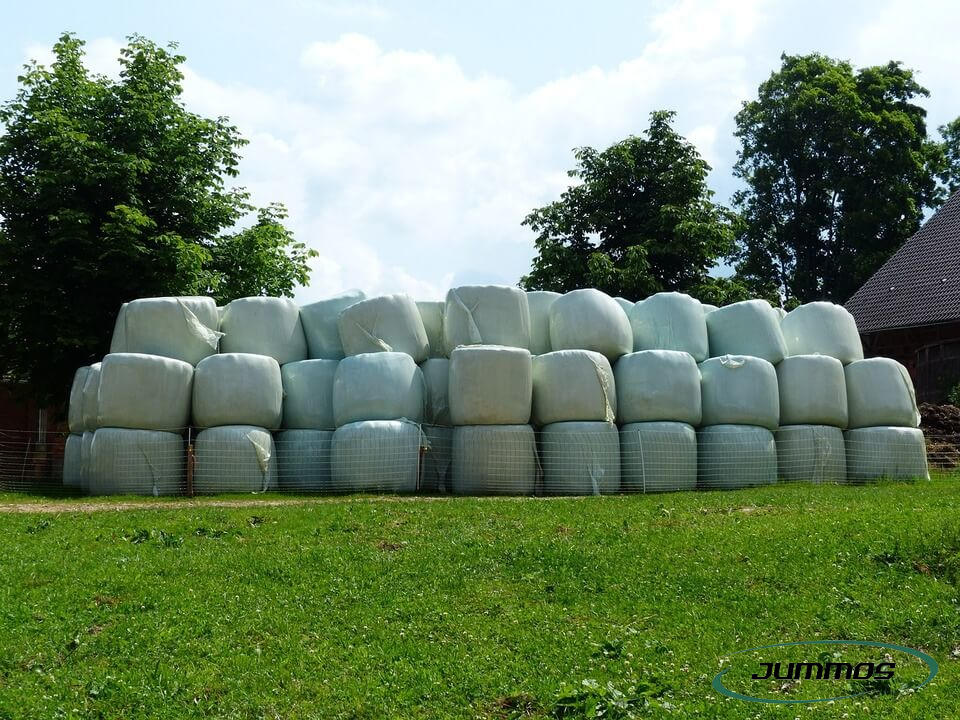
In today’s world, many tasks are accomplished using machines that prioritize practicality, convenience, speed, and neatness. This is especially true in the bale wrapping process, where operations are conducted swiftly, efficiently, and with minimal commands.
Many bale wrapper machines are designed to operate with just one or two buttons. Additionally, some models allow for remote operation via a control system, enhancing user convenience. Operators can easily learn to navigate these machines by referring to the accompanying manual or watching instructional video tutorials.
Contents
Bale Wrapper Process: Almost Instant Silage
Imagine the inefficiencies if we relied on traditional methods for storing animal feed in our fast-paced world. Delays in food preparation can lead to significant issues for ruminant animals, including digestive disorders that negatively impact their reproductive and respiratory health.
The traditional silage production process can be labor-intensive, involving several steps: cutting raw materials, transporting them to a fermentation bunker or silo, and finally wrapping them. Afterward, the silage requires a waiting period of up to 12 hours for fermentation. In today’s fast-paced environment, who has time to wait that long?
Fortunately, modern agricultural equipment has revolutionized the bale wrapping process. Advanced machines are designed to create “almost” instant silage, streamlining the work from collecting individual hay bales to wrapping them in silage plastic film and fermenting them. With just one affordable machine, all these tasks can be accomplished efficiently.
There are two primary types of bale wrappers to consider: single bale wrappers and in-line bale wrappers, each offering unique benefits.
Round Hay Bales: The First Step in Bale Wrapping
Creating round hay bales is the initial step in the entire bale wrapping process. This activity is crucial for compacting the hay into perfect spherical rolls. Unlike square bales that require stacking, round bales are often preferred for their ease of handling.
The process for making round hay bales includes the following steps:
- Collecting Grass: Gather a sufficient amount of grass near the mower. Use the mower machine to cut the grass, leaving loose clippings spread across a large area near the silage storage location.
- Windrowing: Utilize a windrower to gather the loose grass into a narrow path, facilitating easier collection.
- Baling: Employ a round baler to compress the grass into round rolls. You can find a variety of round balers available on online marketplaces tailored to your needs. This step will yield several bales of hay in the field, which can be left temporarily.
Using a Bale Wrapper
Now that your round hay bales are positioned near the bale wrapper machine, it’s time to proceed with the bale wrapping process:
- Extend the Bale Wrapper Arm: The wrapper’s arm automatically extends to pick up a round hay bale within its reach.
- Positioning the Bale: The arm places the bale onto the rotating platform of the machine. Once positioned, the bale begins to rotate.
- Wrapping: As the bale rotates, a small tool that holds the roll of plastic sheet starts wrapping the bale quickly. This wrapping process takes less than 15 seconds. The machine will not lift the bale again until the wrapping is complete.
- Unloading: Once the wrapping is finished, the machine awaits a command to unload the bale. Press the ‘unload’ button to release the bale onto a metal shovel located at the rear of the machine. The shovel then directs the bale to a nearby field, where it will rest flat on the ground.
Conclusion
And there you have it—the complete bale wrapping process, successfully transforming a round hay bale into silage. With modern machines, the efficiency and speed of this process not only save time but also enhance the quality of silage produced, ensuring that your livestock is well-fed without unnecessary delays.
